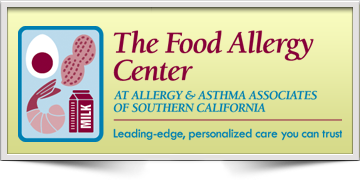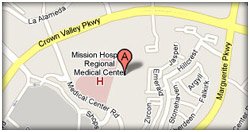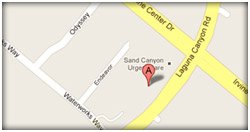"Allergic rhinitis" is the medical term for allergy affecting the mucous membrane, or lining of the nose. Rhinitis means inflammation of the lining of the nose, while Allergic Rhinitis means that an allergy is the cause of the inflammation. Tree, grass, and weed pollens are common causes of seasonal allergic rhinitis, sometimes called hay fever, while house dust mites and animal dander cause year-round nasal allergy or perennial allergic rhinitis. People with allergic rhinitis often think they have "sinus trouble", or just get frequent colds. Most people develop allergic rhinitis before age 30 and an estimated 13 million Americans suffer from hay fever – primarily due to ragweed pollen allergy. Allergic rhinitis is the most common chronic disease of childhood and is a leading cause of chronic disease in adulthood.
When no specific allergy can be found but nose symptoms are present the condition is called vasomotor rhinitis, which is the most common form of non-allergic rhinitis.
Symptoms:
Allergic rhinitis can cause many symptoms such as stuffed-up nose, postnasal drip, sneezing, and itchy nose. In the setting of Allergic rhinitis other areas of the body are also commonly affected such as the eyes. Those patents may notice red, itchy, watery eyes, and swollen eyelids. Patients may also notice itching of the mouth, throat, ears, and face, sore throat, dry cough. Feelings of fullness and buzzing in the ears, partial loss of the senses of hearing, smell, and taste are commonly reported. Finally, headache in the front part of the head as well as more general symptoms like fatigue may be present.
Is it a cold or is it allergy?
Because of the symptoms, allergic rhinitis is often mistaken as a cold or upper respiratory viral infection. Whenever these symptoms occur repeatedly throughout the year, allergy should be suspected. The discharge from the nose in allergic rhinitis is usually thin and clear. In the person with a cold, it is usually thicker and yellowish due to infection. Unfortunately, when the membrane of the nose becomes irritated by allergy it is easier for germs and viruses to invade and multiply, so it is not uncommon for a person to have both allergic rhinitis and infection.
Another clue that may be noticed is persons with allergic rhinitis often have dark circles under their eyes; this is due to congested blood in the nose backing up and being visible through the skin under the eyes. To relieve an itching nose, children, especially, may develop the habit of pushing the nose up with the palm of the hand; this is called the allergic salute. After a few years, this can cause a crease (called an "allergic crease") to appear across the nose. Also, the midpart of the nose may broaden from the pressure of swollen tissue underneath. The mouth may be open continually so the person can breathe better. Children may develop a variety of other mannerisms which parents find annoying but which are caused by the allergy.
What causes allergic rhinitis?
Allergic rhinitis usually results from allergy to a variety of things including pollen, dust, mold, and animals. The nose is especially reactive because it contains many cells filled with histamine, which become sensitized and release the histamine upon contact with an allergen. The symptoms of allergic rhinitis result from the action of histamine and other chemicals released in the allergic reaction. These chemicals cause swelling and a resulting decrease in size of the nose opening, making breathing more difficult. They also stimulate the inner lining of the nose to secrete watery mucus, causing a runny nose or postnasal drip. These discharges irritate nerve endings, which cause itching, sneezing and also possibly sore throat. The reaction may travel to affect from the tube going to the ear (eustachian tube), causing a feeling of fullness and buzzing. When it goes up the sinuses, it causes a sinus pressure and headache.
Complications:
If allergic rhinitis is not treated, symptoms of both allergy and infection can develop in the throat, ears, and sinuses because these areas are lined with the same kind of membrane as the nose. Tonsils and adenoids may become enlarged and diseased, and growths called polyps may develop in the nose. Fluid can also build up in the ear – a condition called serous otitis media. This condition is particularly common in babies and young children. Sinus problems following allergic rhinitis are more common in older children and adults. All of this may lead to recurrent infections, chronic open mouth breathing, poor sleep and worsening of other conditions such as asthma, sleep apnea, and other chronic diseases. Not only are these symptoms a nuisance but they can lead to shyness, fatigue, depression and seriously affect the quality of life of those that are afflicted.
How is Allergic Rhinitis treated?
Medicines are used to help control the symptoms of nasal allergy. Sometimes these are all that will be needed if the allergy is the seasonal type. People with severe or year-round symptoms will probably also need to take allergy shots and try to avoid allergens. The medicines will need to be continued until the shots become effective, which can take several moths or even a year. Antihistamines and decongestants are the drugs commonly used to control symptoms of nasal allergy as they are readily available over the counter.
Antihistamines:
Antihistamines block the effects of histamine one of the main chemicals that causes most allergic symptoms. They also dry mucous secretions but do not affect congestion. Several types of antihistamines are available so if one stops working the doctor may prescribe another. The most common side effect of antihistamines is drowsiness, which can be helpful at night but can interfere with daytime activities and operation of machinery such as automobiles. In general there are two basic generations of antihistamines. The older antihistamines, or first generation, tend to block all histamine receptors, not just those that are related to allergy. Because of this, it is the first generation antihistamines that will cross into the brain and cause sedation. The second generation antihistamines tend to be more selective for the main allergic histamine receptor (H1) and have little or no sedation. In addition, the second generation antihistamines last longer and may be taken only once daily.
Decongestants:
Decongestants reduce swelling by shrinking the size of the tiny blood vessels in the nose. This in turn reduces the amount of liquid that can escape from the vessels into the tissue and cause swelling. Before going to an allergist, many people try decongestants available over the counter in drop and spray forms. Unfortunately they often find that they must use them more and more often to relieve their congestion. This occurs because continued or very frequent use of these topical medications can irritate the nasal passage causing further congestion (sometimes called a "rebound" reaction). For this reason, these topical decongestants are usually prescribed only in certain situations and for a short period of time, typically no more than 3 to 5 days. Once a patient has this rebound reaction, the doctor will have to slowly wean the patient off these medications and will also have to use different medications to control the inflammation.
Topical corticosteroids:
When nasal symptoms are not adequately relieved by oral antihistamines and decongestants corticosteroids are often prescribed. This is usually the time when patients seek medical attention as the other the counter medications have failed. There are several different topical steroids available, but they are all by prescription only. These medications work very well and are generally considered safe and affective for allergic rhinitis down into early childhood. These medications work on several different "pathways" that cause allergic inflammation and are considered an overall anti-inflammatory medication. These medications have been around for decades and newer version continue to be developed each year. There is always concern for side effects with any medication, but the word "steroid" seems to cause a sense of fear in both patients and parents. Keep in mind that a topical nasal spray is considered topical therapy and little if any of the medication affects the rest of the body. That being said, there is always a possible side effect and so as with any medication patients should discuss these concerns with their doctor. In general, the greatest concern and that these medications will dry the nose out too much and patients will develop nose bleed. The other rare concern observed in children with older nasal steroids is growth rate reduction. This reduction is only observed in the first year of therapy, and is approximately ½ to 1 cm and these patients eventually achieve their normal adult height.
Topical nasal antihistamines:
Another group of medications that are commonly used when oral antihistamines have failed are the intranasal antihistamines. These nasal sprays use the concept of targeted therapy, much like that with nasal steroids. This concept allows for application of the medication directly to the tissue involved. With this approach there is less potential for side affects in other parts of the body. Drugs can be delivered at higher concentrations within the nose, compared to concentrations that are achieved with oral antihistamines. Because of this, antihistamine nasal sprays work very well for all of the symptoms of allergic rhinitis, to include nasal congestion. With any nasal spray, there is always a risk that the lining of the nose may become too dried out and nose bleeds may occur. If any nasal spray is prescribed, patients should have routine follow-up with their doctor to ensure that there are no visible side effects and any changes in medications can be made.
Allergen avoidance:
Patients who have symptoms that are consistent with allergic rhinitis should be evaluated to determine if a specific culprit allergen can be identified. This is usually done when a patient is evaluated by an allergist and skin testing is performed. The same allergy cells that are in the nose are also found in the skin, so a small drop of this fluid on the skin will cause a red bump on the skin if the patient is allergic. Once testing has been performed, then the allergist can provide some avoidance strategies. This may be simple such as avoiding a cat or a dog, but at times can be more difficult such as avoiding airborne pollens.
Allergen Specific Immunotherapy or "Allergy shots":
In some settings medications and avoidance does not work or there are undesirable side affects. These patients should be considered for allergy shots. In general, all the medications treat the symptoms of allergic rhinitis. They either block or suppress the allergic inflammation. However, once these medications are stopped the symptoms will return. Allergy shots are the only therapy that actually treats the disease, and after a full course of allergy shots patients may be cured or at least free of symptoms for many years. Allergy shots also prevent the onset of asthma in children with allergies. In those patients who already have asthma, allergy shots can help control the asthma or make it less severe. Since allergy shots are the only time in medicine that your doctor will intentionally give you what you are allergic to special care must be taken to avoid severe allergic reaction. It is for this reason that allergy shots should only be given by a doctor especially trained in the administration of allergy shots as well as handling the possible complications.











